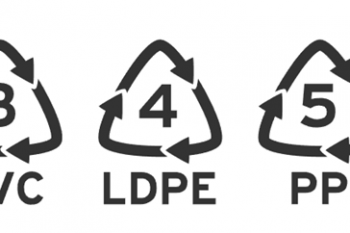© Pint of Science, 2024. All rights reserved.
This time, Patrick tells us a little about his fascination - ants.
Who has not experienced this situation? We forget about sweet leftovers in the kitchen and within a few minutes, there is a large ant trail feeding on it. At this moment, we think about ants, but ants are present throughout the year and worldwide1. Today, more than 14.000 ants species are known (www.antcat.org, retrieved on 13.03.2022) and about that number is expected to be still out there –waiting to be found and described2. What impresses me about ants is their huge biomass. Within a single ant colony (such as wood ants), more than 300.000 individuals live together3 – and this is just a single nest. Now think of all ants in the world: If we are to weigh all ants (the estimated number is 10.000 trillion individuals), their weight is assumed to be similar to the weight of all humans together4,5.
Now, how did ants manage to become ecologically so successful? Their ace up in the sleeve is called eusociality. Eusociality is a behaviour that social insects such as ants, bees, wasps, and termites have. It comprises several traits: cooperative brood care, overlapping generations, division of work, and often but not necessarily, the presence of a single reproductive individual. This combination of traits allows social insects such as ants to work together in huge colonies, where they perform important ecosystem services to us humans6,7. For example, ants are pollinators (such as bees), they disperse seeds (called “myrmecochory”), they act as biological pest control (wood ants, for example, feed on larvae of bark beetles and protect the woods from destruction8), and they are important for the reworking of soils and sediments9 (called “bioturbation”).
As if this is not impressive enough, it is the large diversity of lifestyles that ants have, which never ceases to amaze me. Wherever you look, ants just developed an amazing way to flourish: Some ant species became farmers and invented the cultivation of mushrooms to feed on them (“leaf-cutting ants”4), others tend aphids (ants protect aphids from predators and aphids release honeydew, which ants use as food), others forage in huge raiding columns10 (and feed on whatever they find, called “omnivory”), and again others look for food everywhere, also in our kitchen.
So, next time, ants are in your kitchen, maybe take to a moment to appreciate their diversity and what they do for us humans, even though we often do not know about it. And if you still want to get rid of them in your kitchen: Brush them gently away and clean the area, where the ant trail was with a cleaning agent (e.g. alcohol) to remove their pheromone trail or just keep watching them.
Patrick
References
Ward PS. Taxonomy, phylogenetics, and evolution. In: Ant Ecology. eds Lach L, Parr C, Abbott K. Oxford University Press (2010).
Lach L, Parr C, Abbott K. Preface. In: Ant Ecology. eds Lach L, Parr C, Abbott K. Oxford University Press (2010).
Chen Y-H, Robinson EJH. The relationship between canopy cover and colony size of the wood ant Formica lugubris - Implications for the thermal effects on a keystone ant species. PLoS ONE 9, e116113 (2015).
Hölldobler B, Wilson EO. The ants. Harvard University Press (1990).
Hölldobler B, Wilson EO. Journey to the ants: a story of scientific exploration. Belknap Press of Harvard University Press (1994).
Eggleton P. The state of the world's insects. Annu Rev Environ Resour 45, 61-82 (2020). 10.1146/annurev-environ-012420-050035.
Philpott SM, Perfecto I, Armbrecht I, et al. Ant diversity and function in disturbed and changing habitats. In: Ant Ecology. eds Lach L, Parr C, Abbott K. Oxford University Press (2010).
Trigos-Peral G, Juhász O, Kiss PJ, et al. Wood ants as biological control of the forest pest beetles Ips spp. Sci Rep 11, 17931 (2021). 10.1038/s41598-021-96990-5.
Meysman FJR, Middelburg JJ, Heip CHR. Bioturbation: a fresh look at Darwin's last idea. TREE 21, 688-695 (2006). 10.1016/j.tree.2006.08.002.
Lach L, Parr C, Abbott K. Ant Ecology. Oxford University Press (2009).




